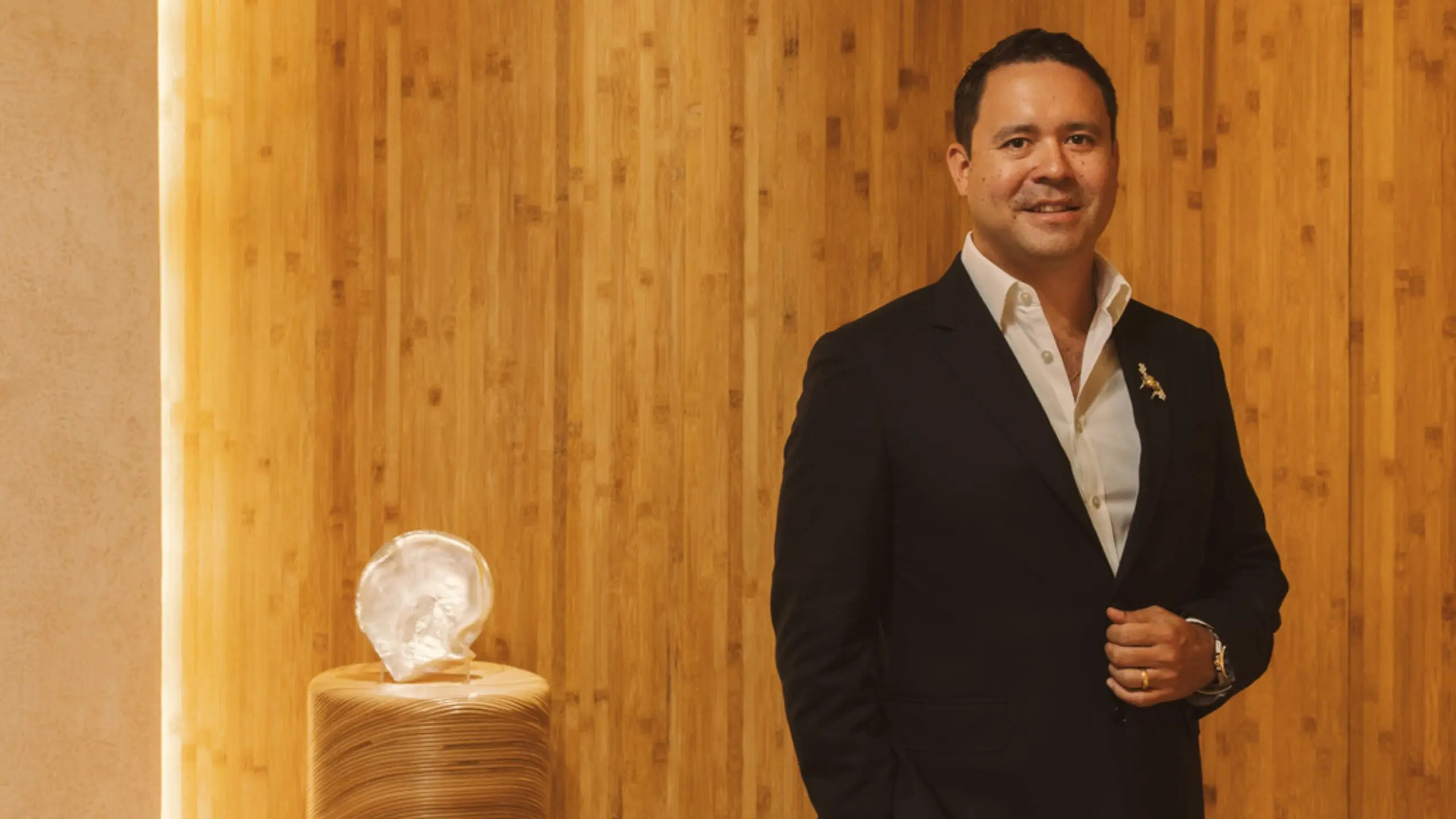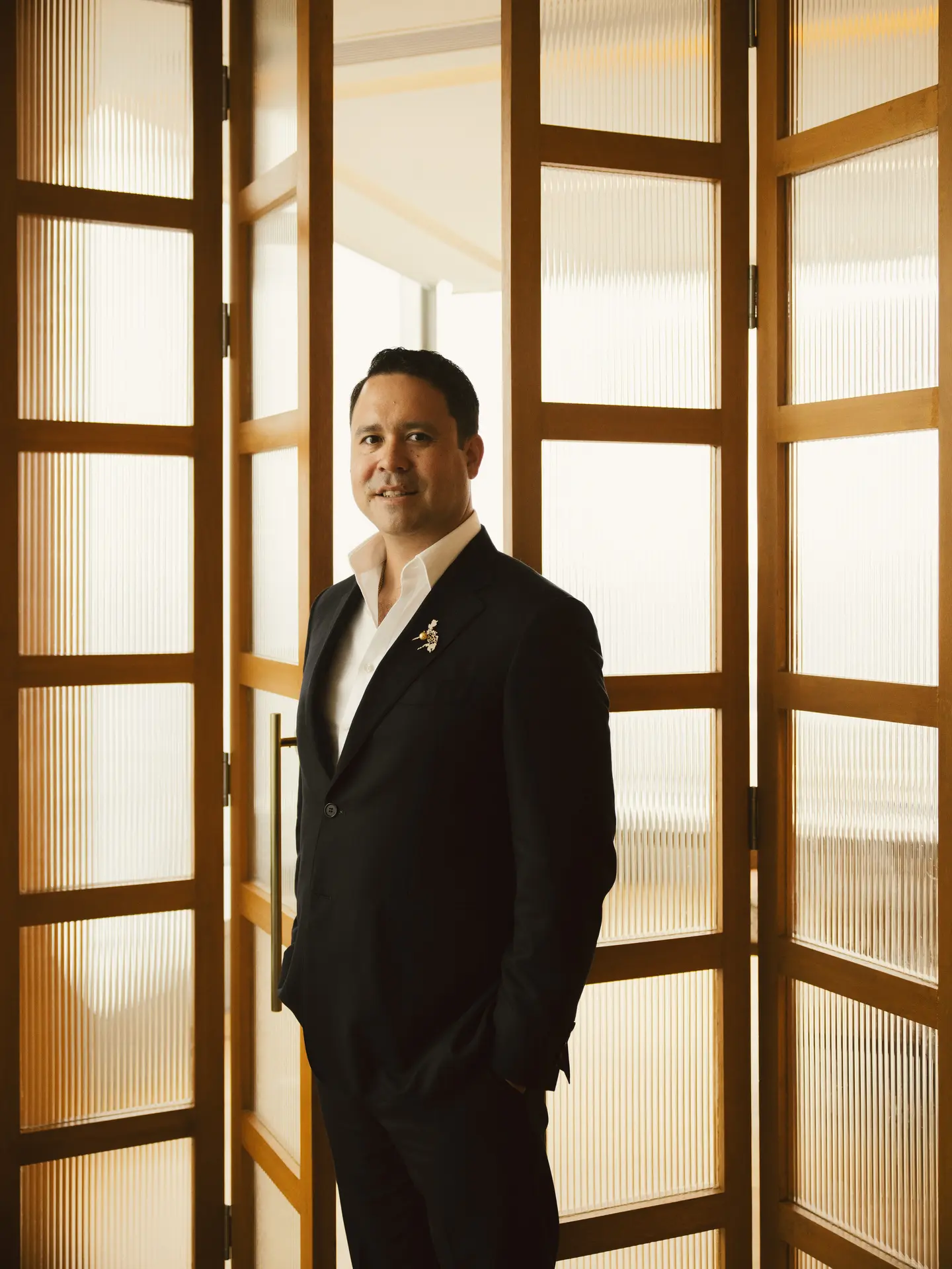Leaders of Luxury: Jacques Christophe Branellec

Some of Jacques Christophe Branellec’s earliest childhood memories are of long summer days at their pearl farm in Palawan, splashing in the seawater, playing in the sand.
“I remember waiting for the tide to go out, and seeing what sort of crabs and different animals we could catch in the low tide,” he says. “And then, not long after that, holding oysters, moving them around, and looking for work I could help with at the time.”
Jacques Christophe’s father, a French pearl farmer, is the co-founder of Jewelmer; his mother is a Filipino marine biologist. Thus, the family spent most of their time on the island. Later, when Jacques Christophe started school in the city, they still spent holidays at the pearl farm: Easter break, summer, and Christmas.
He remembers how, when he was ten years old, he drove a tricycle to shuttle scientists around the island. “Whatever small tasks needed to be done on the farm, I took joy in doing them,” he says.

He’s hoping to bring the same joy to his own young children. “Whenever I go to Palawan, I try to bring them with me and expose them to the life there, the people, and the shells. I have them play with the oysters,” he says. “I’m hoping that from a young age, they can sort of build that connection, so it’s not something foreign or uncomfortable for them.”
Since its founding in 1979, Jewelmer’s golden pearls have become known across the globe as a symbol of rarity and elegance. Today, as the second-generation leader, Jacques Christophe is the guardian of the golden pearl and a storyteller of its Philippine heritage.
“The pearl has a very, very long history with mankind. In the Bible, it’s the most mentioned gem. Pearls were an important part of the royal family’s jewels in Asia and in Europe. In fact, men started wearing them as talismans even before women did,” he says. “Different cultures have had different relationships with the pearl. They all share that wonder in its mystery. It represents something truly ethereal. But it’s important to highlight that the golden South Sea pearl, this beautiful gem, is from the Philippines. It’s part of our country’s natural heritage.”
Back in 1996, President Fidel Ramos proclaimed the golden South Sea pearl the national gem of the Philippines. To this day, Jewelmer proudly positions it as a symbol of Filipino excellence.

Running a pearl farm means confronting uncertainty. Climate change has reduced oyster survival rates by nearly half compared to a decade ago. “The rate of change that the environment is going through far exceeds the rate of change that evolution can catch up on. Today, our production is 50 percent less than it was 10 years ago because the baby oysters are not surviving as well as they used to. We’ve always said that the pearl is an indicator of the health of the environment,” he says. “Oysters are a very basic form of life, and together with the oysters, many other lifeforms will perish with them if the oyster can no longer survive.”
For Jacques Christophe, pearl farming is a passion, a chosen way of life that is highly dependent on the unpredictability of nature.
“Pearl farming has certainly taught me a lot about nature. And nature is a teacher on its own,” he says. “Nature is slow. It taught me patience. It taught me perseverance, grit, and adversity. It taught me how to face or deal with situations that you may not fully control, but doing what’s best with the resources that you can control.”
“Every harvest of a pearl is a gift. It’s not a manufactured process—it’s not a factory where there’s input and a guaranteed output. It’s really strengthened my faith in the unknown,” he says. “Everybody goes through challenges, everybody goes through pain. Out of that, something beautiful can emerge. In the same way, when the oyster is creating a pearl, there is that same challenge. What the oyster does is create something of beauty. That’s what we too must learn from the oyster.”
This article originally appeared in Robb Report Philippines’ Best of the Best Issue, October 2025.